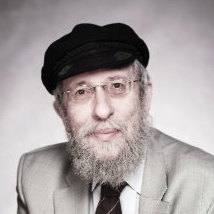
Featured Item

‘Dark tourism’ of Auschwitz just one piece of the puzzle
MIRAH LANGER
For anthropologist Jonathan Webber, who served as a member of the Auschwitz museum’s international board for more than 20 years, these are just some of the questions being grappled with, even if the answers aren’t easy to come by.
Indeed, as Auschwitz increasingly serves as the core representation of the Holocaust, Webber suggests that the challenge is to find ways to allow the complexity of its meanings to co-exist.
“Auschwitz is primarily a cemetery, but in 1947, two years after the war, the site was turned into a museum. Since then, it has become a place of pilgrimage, and a place where authorities stage memorial ceremonies.”
Furthermore, it has also become a key destination for “dark tourism” – the practice of going sightseeing at places of mass atrocity.
Alongside this, it remains a “real place” in the world, one that in 2019 at times struggled to cope with soaring numbers of tourists.
As so many people access the site as some kind of porthole into the past, it becomes key to interrogate what past it actually represents. Webber cautioned that this was far more complex than might be expected.
For example, he noted that even the lush grass that now grows on the site isn’t an accurate reflection of how it would have looked during the war. At that time, “It was just mud, and if there was any grass, the prisoners would have eaten it.”
With decades having passed since the end of World War II, Auschwitz is enfolded in many layers of history.
On the one hand, there are completely original structures on the site such as the entry gates to Auschwitz I and Auschwitz-Birkenau, some of the barracks and watchtowers, as well as the ponds still filled with human ash. On the other hand, other parts of the site have been reconstructed, recreated, or just lie in ruins.
The infamous arbeit macht frei (work sets you free) sign on the entry gate, for example, is in fact a replica, the original having been stolen in 2009.
The pillbox at the roll-call square is a reconstruction using original materials, while a cattle car placed on the railway tracks is, in fact, a donation by an Australian businessman who purchased the artefact from elsewhere. Similarly, the gas chamber at Auschwitz I is also a reconstruction, but one which the museum later admitted had some historical inaccuracies.
Even the ruins represent different interventions of history. Some parts were destroyed by the Nazis to hide the evidence of their crimes towards the end of the war. Yet, one of the gas chambers and crematoria on the site was destroyed during an uprising of Greek Jewish prisoners. Some of the barracks were dismantled after the war by local Poles looking for building material. Other areas simply succumbed to the passage of time.
Beyond the complication of determining what should be seen by those visiting the site, the challenge is also to encourage visitors to contemplate what’s absent.
“Day-trippers tend to focus on what’s there rather than meditating on what Auschwitz destroyed, and the nothingness it created.”
Ultimately, Webber suggests that Auschwitz is best characterised as a “mosaic”.




